Scientific name: Anacridium aegyptium
Family: Acridoidea
Large and impressive the Egyptian Grasshopper is a common species around the Mediterranean. They are vegetarian and completely harmless to people, other than that they are often so well camouflaged they may startle you when they suddenly fly up in front of you as you walk.
Adult female Egyptian grasshoppers can reach a length of 6.5cm.
The male is smaller, growing to around 3.5cm. The antennae of both sexes are relatively short and robust. The spiny projections on the underside of the legs help the insect to cling to vertical surfaces.

The antennae are quite short and robust, the eye is diagnostic of the species - it is always striped. The pronuptum (the shield type shape behind the head, as seen in the image above) is distinctly ridged, like plates of armour.
The adult grasshoppers are generally grey, brown or olive coloured with variable patterns that allows them good camouflage against tree bark and other vegetation; green individuals may occur, but very infrequently.
Both sexes fly very well at a good speed over short distances and can frequently be seen – and heard- doing so, making a distinctive ‘clattering’ sound. They are so large in flight that more than once I have to admit I have mistaken one for a small bird. At rest their wings are folded along the body and overhang slightly. If disturbed on the ground, the grasshoppers can also use their strong back legs for jumping.
In December 2010, in a flowering shrub in my friends’ garden in Jimena we came across the pair of grasshoppers pictured above. A smaller male is on top of the larger female and although not actually doing so, was probably intending, or hoping to mate with her. Even more interesting was the fact that throughout the shrubbery beneath them, at least a dozen similar males were present. There was no apparent aggression between them, but it would be interesting to know whether the female has any choice of a mate or if she will mate with more than one male.
Eggs are laid in the spring just under the soil surface. The young grasshoppers are tiny when they first emerge as nymphs and can be found in a variety of colours including bright green, shades of brown and even a pale orange, a selection of which may be found feeding communally. They can be told apart from other grasshoppers by the shape and size of the pronotum and if you can get a close enough look, they have the diagnostic vertical striped pattern in their eyes, which is visible at all growth stages.

A developing Egyptian Grasshopper showing tiny wings, very well camouflaged against a geranium plant
The growing grasshoppers will undergo several moults during their first months; in the early stages the wings are only visible as tiny wing buds that enlarge gradually at each moult. It is not until they go through their last moult to adulthood that the wings develop fully.
The nymph in the picture above shows tiny wings; it was really well camouflaged against the dead leaves of one of my potted geranium plants that I didn’t spot until picking the leaves off, I almost grabbed the poor thing.
Egyptian Grasshoppers can be found in a variety of habitats preferring warm dry areas of scrub land, maquis and areas with trees, including orchards and gardens; their diet consists of various leaves and a single insect will cause very little damage. They spend a lot of their time hiding amongst foliage and branches of shrubs and trees, and when they catch sight of you they will move slowly to the far side of their ‘perch’, hoping you have not seen them.
This species is active throughout the year and can be found from sea-level to 1,500m.







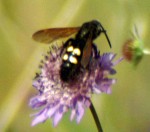
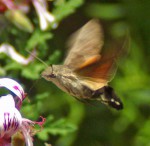

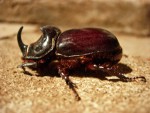
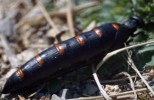
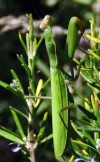

We have a female (I think) Egyptian grasshopper hanging on the bars of our window reja and she has been there for over a week. She slowly moves around the bar during the day but hasn’t actually left the bar & I haven’t seen her catch or eat anything. We have had serious rain for a day & couple of nights but she is still clinging on. Is she in a pre-hibernation state or will she just die soon? She is very beautiful now I have had a chance to study her for so long. Do I need to try & move her? I live in Competa in Southern Spain about 700 metres above sea level.
LikeLiked by 1 person
Hello, just read this as I have been trying to find out about these grasshoppers….we found one behind out partially lowered Spanish plastic window blind…it is between the blind outside and the window…we are all aware of it, so don’t roll up the blind!
It had been there for about 2 months now, it does change positions but very seldom, we had a bright sunny day recently with quite a warm wind, and it came down onto the mosquito blind to sunbathe?? As the evening got cooler, it climbed back up to its usual position, I can’t help thinking it must be hibernating, we are in Baza in Granada province..
LikeLike
Hi Janet, so sorry not to reply sooner, but for some reason only just received notice of your comment! I’d love to know what happened with the grasshopper? As far as I’m aware they don’t hibernate, but they are definitely less active in cooler and wetter weather and seem often to spend long periods of time in one spot, maybe just conserving energy. I’m sure it will have moved on when it was ready? Lucky you to live in such a lovely place!
LikeLike
Nosotros tuvimos la visita de un saltamontes egipcio, hembra creo, 14 días en la terraza, la pusimos en un cajón suelto con corteza de pino, lechuga, repollo, hierba pero no comía, salía solo cuando había sol al mediodía , caminaba muy despacio, después se escondía sin moverse como hibernando. El penúltimo día subió por la cristalera descubriendo lo que tenía a los alrededores y al día siguiente al mediodía con la buena temperatura hizo la marcha con el vuelo de repente
LikeLiked by 1 person
These are big insects so it takes a lot of energy for them to move and when they move it could attract the attention of a predator, so they do stay still where they are camouflaged for long periods of time. I am happy that your visitor left safely!
LikeLike
We have a female Egyptian grasshopper on our balcony for maybe 2 months. First she was in our Lavender plant for a while, then in another vase and now she is on our small olive tree. Is that normal that they stay so long time in one place? I haven’t seen she has been eating of any of our plants. And she is not afraid when I’m on the balcony or taking care of the plants. We live in Tavira, Algarve, Portugal.
LikeLiked by 1 person
I have had an adult female (about 6cm long) residing in my outdoor balcony cupboard all winter (Murcia). She rarely seems to move from the corner she is in. How long do they tend to go without food in the winter? I have assumed she gets in and out somehow as pretty sure she didn’t walk or fly in when I had the cupboard door open as I would have noticed. But am just a bit concerned that she is trapped and starving. She doesn’t react when I open the door apart from a bit of shuffling around.
LikeLiked by 1 person
Hi Lynda, I hope your grasshopper survived and is now out and about outside!
LikeLike